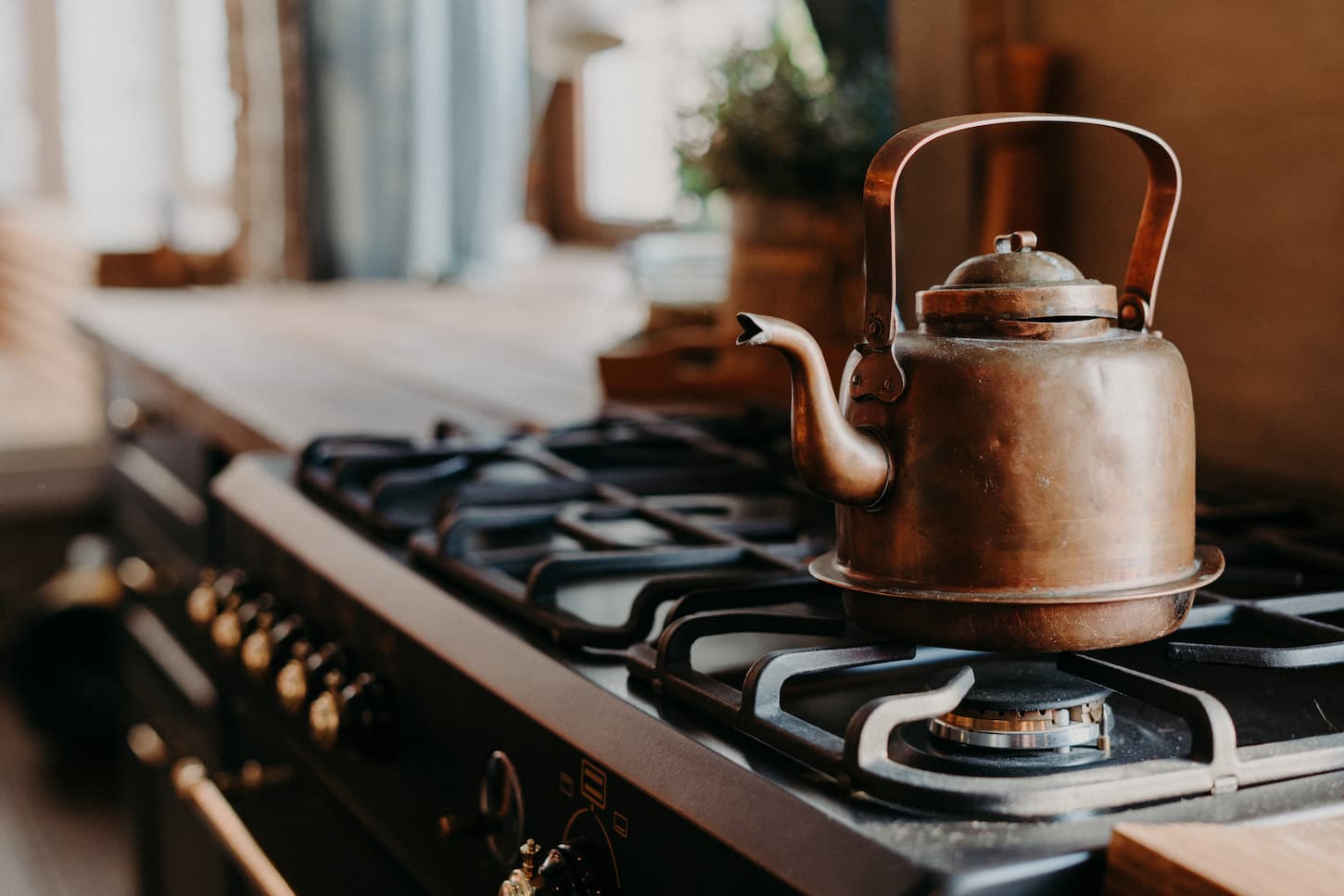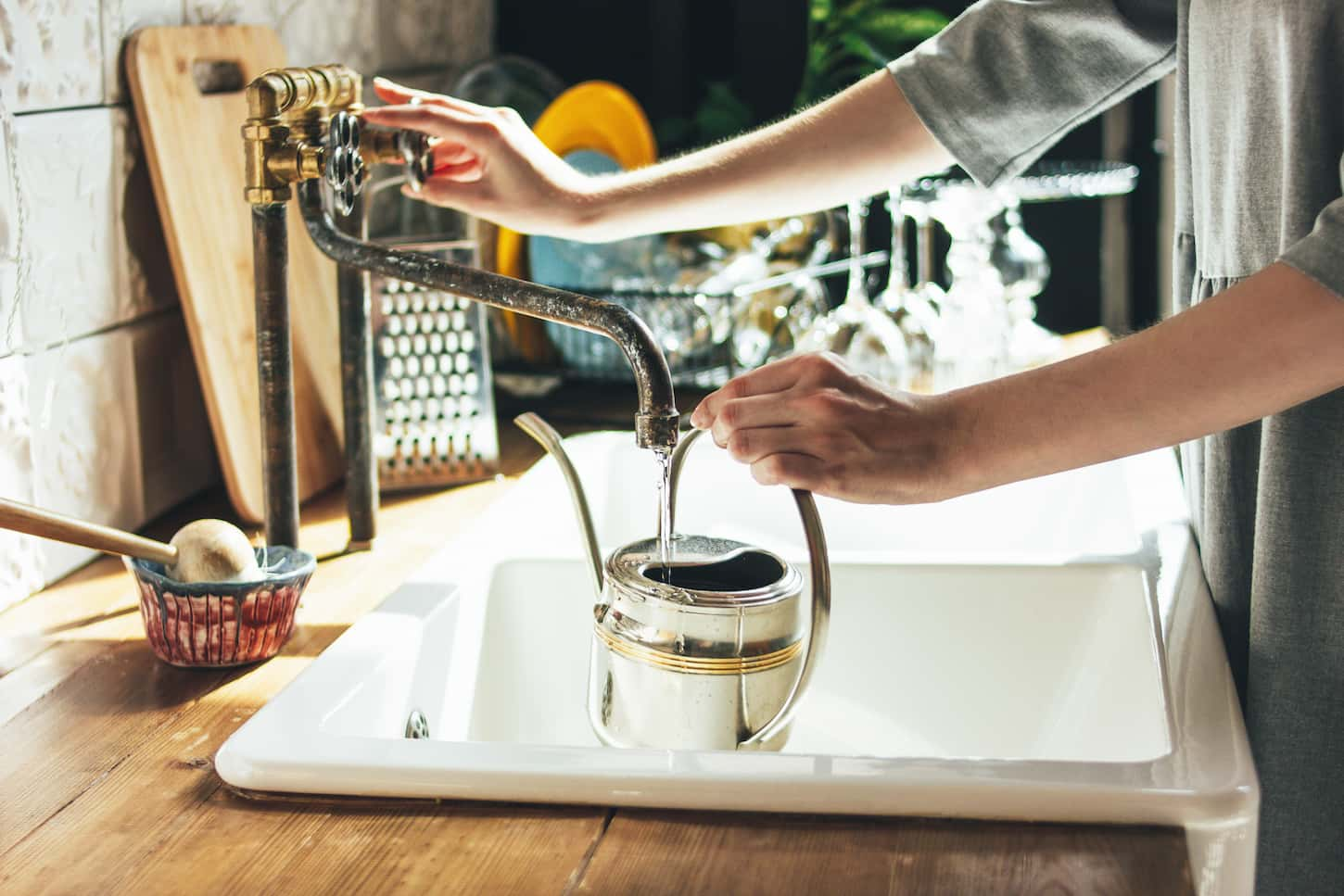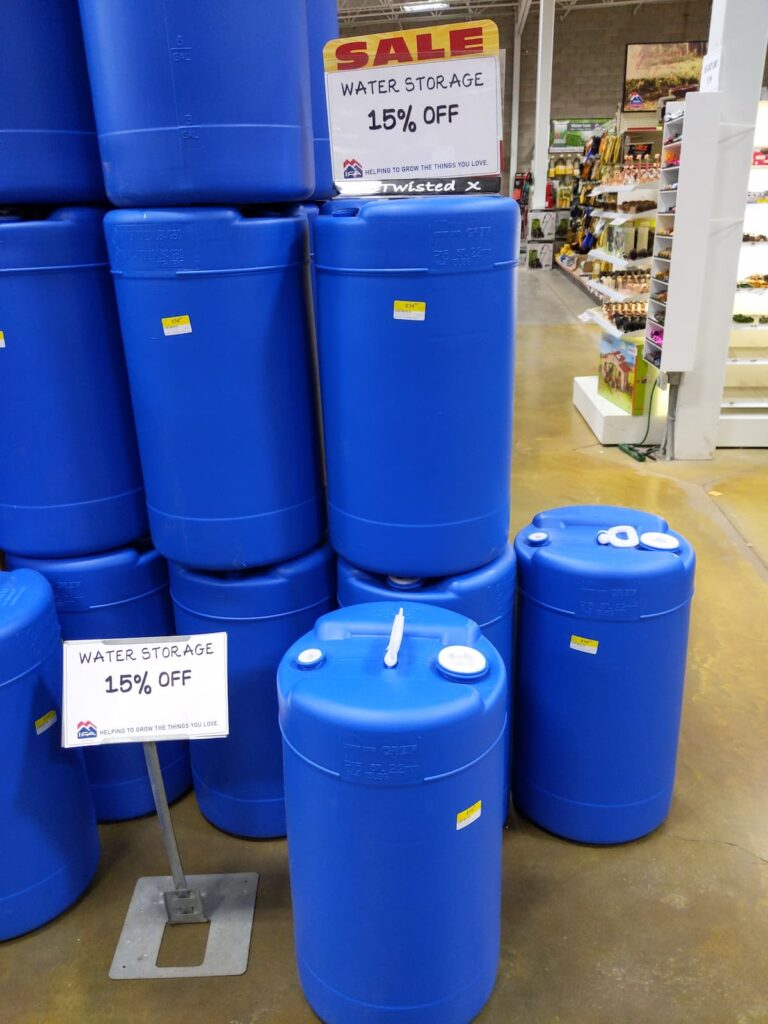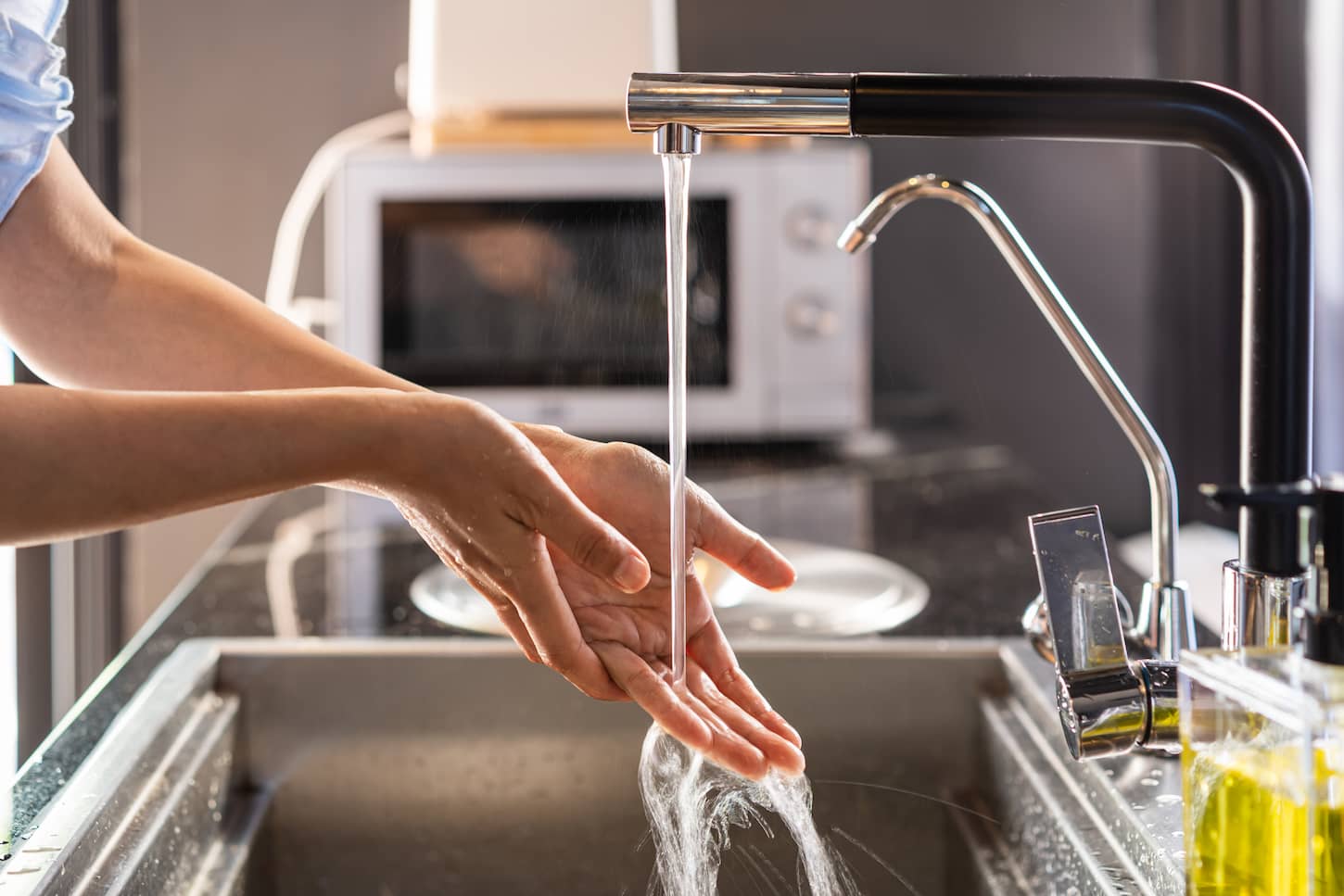Water boil advisories are common in the USA. They’re issued by local water suppliers if there is a problem with the water system. And even though having to boil your water is inconvenient, ultimately, it will protect you and your family’s health. And if you prepare correctly, a boil advisory needn’t disrupt your life too much.
During a water boil advisory, boil all tap or well water to kill bacteria before you ingest it to prevent illness or worse. Having some clean water stored for emergencies, including boil notices, is another way to be prepared.
If you’re issued with a water boil advisory, you might be a little alarmed at first. But fear not, in this guide, we’ll give you all the vital information you need to know about a water boil advisory.

What is a Water Boil Notice (or water boil advisory)?
Water suppliers have a duty to provide the public with clean water. But sometimes the water supply can become contaminated with bacteria. If water suppliers suspect the water is unsafe, they’ll issue a water boil notice or advisory. The public should then boil their water before consuming it.
A water boil notice doesn’t necessarily mean that your water is contaminated. Often, they’re issued as a precautionary measure to help protect us against waterborne illnesses. The most common bacteria that can find their way into our water systems include:
- Cholera
- Salmonella
- Giardia
- E-Coli
- Norovirus
- Cryptosporidium
In the notice, your water supplier will tell you why they have issued the advisory. And here are the most common reasons why you’ll be given a water boil notice.
- System maintenance
- System flushing
- Loss of water pressure
- A break in the water main
- Presence of bacteria in the water
- Sewage contamination
- Severe weather or natural disasters such as flooding
A water boil advisory will usually last for 24 to 48 hours. But depending on how severe the problem is, you may have to boil water for several days. The boil notice will only be lifted when the water tests safe again.
How Do I Find Out About a Boil Water Notice?
Water suppliers will publicize a water boil notice as much as they can. You can find out about a water boil notice in your local newspaper or hear about it on the TV or radio. In some instances, you may receive a letter from your water company to inform you about a water boil advisory.
If your water supplier has your contact details such as your email and cell number, they will try to reach you on these.
So, it’s worth checking to make sure that your details are up to date with your supplier. And you can always check your supplier’s website to see if there are any water boil notices in your area.
Water Treating Options During a Boil Notice
The safest way to treat water during a boil notice is by boiling it prior to consumption. The Environmental Protection Agency (EPA) says boiling is the safest way to treat water during a boil notice. However, you can also treat water with a tiny amount of unscented bleach (at a 5-9% concentration) of sodium hypochlorite.
If you can’t boil your water, you can treat it with unscented bleach. But make sure that the bleach is unscented and has a 5-9 percent concentration of sodium hypochlorite. If the bleach has a lower concentration than this, you’ll have to use more of it to treat your water.
Make sure that any bleach for treating water does not have other cleaning agents in it.
Sometimes, this kind of bleach will be labeled as “food-grade.” However, that label isn’t always on the bottle, so make sure you’re looking for the 5-9% concentration of sodium hypochlorite. Be sure to give the bottle a good sniff, too. It should smell like bleach.

How to Treat Water During a Boil Notice
The best way to treat water during a water boil notice is by boiling it. Then let the water cool before use. If boiling isn’t an option, add small quantities of unscented bleach to the water to make it safe for drinking.
When you boil water, keep it at a steady rolling (or roiling) boil for at least a minute. But if you live in an area over 6500 feet, you need to let the water boil for three minutes. If your water is cloudy, let it settle before you boil it. And pass it through a filter first to get rid of the sediment.
It’s a good idea to always have a bottle of non-scented bleach in the house ready in the event of a water boil advisory. If you want to use bleach to treat your water, you should use 8 drops of bleach to 1 gallon of water. If you don’t have a dropper bottle, you can measure the bleach with a teaspoon or a syringe that measures in milliliters.
Pro tip: some bottles of bleach may be labeled as “food grade.” These bottles will have water treatment instructions on the bottle. Sometimes, bleach isn’t labeled as “food grade” but can still be used to treat water if it’s unscented and has a 5-9% concentration of sodium hypochlorite without any other active ingredients or cleaning agents.
To help you get a better idea about using bleach to treat water, take a look at the table below. This is useful if you need to disinfect large amounts of water for animals for example. According to the Centers for Disease Control and Prevention (CDC), this is how much bleach you should use to treat water using either drops, milliliters, or teaspoons.
Table: Treating water in large quantities (for humans and for animals)
| 1 Quart of Water | 1 Gallon of Water | 5 Gallons of Water | |
|---|---|---|---|
| Drops of Bleach | 2 | 8 | 40 |
| Milliliters of Bleach | 0.1 | 0.5 | 2.5 |
| Teaspoons of Bleach | N/A | Just under 1/8 | 1/2 |
It’s always recommended to treat water for your animals, too. Your chickens may not throw a fit at being given contaminated water, but clean water is always best for animals.
If you need more information on keeping water fresh for your chickens, make sure you check out this article I wrote on safe, clean drinking water for chickens next.
Is it Safe to Drink Filtered Water During a Water Boil Advisory?
Overall, it’s not safe to drink filtered water during a water boil advisory unless it’s been boiled prior to filtration. Standard filters don’t remove pathogens and bacteria from the water. They mainly remove minerals.
If you have water treatment systems installed in your home, you still have to boil your water before drinking it. During a water boil advisory, it’s not safe to drink water from carbon filters, water softeners, or sediment filters for example.
If you could somehow manage to boil the water before running it through the filtration system, then it would be fine. However, since most filtration systems are built in place, boiling it first isn’t possible.
Reverse osmosis (RO) systems do remove pathogens. However, they will only do this if the system is high quality and well maintained. So, if you have any doubts about the effectiveness of your RO system, you should not drink the water from it during a water boil advisory.
Pro tip: Once a boil notice has been lifted, make sure to sanitize your filtration system and replace filters as needed, so that residual contaminants and bacteria are removed from your filtration system. Bleach is probably the best way to sanitize a filtration system.

What Happens If You Drink Water During a Boil Notice or Advisory?
If you drink water during a water boil advisory, don’t panic. Remember, most of the time, water boil advisories are issued as a precautionary measure. So, the chances that you will get ill are slim. You must stop drinking the water as soon as you’ve realized your mistake.
Stopping drinking the contaminated water will lower the chance of you getting sick. So be sure to stop drinking any potentially contaminated water.
If you develop any food poisoning symptoms such as vomiting or diarrhea, make sure you stay hydrated. And if you’re concerned about your health, don’t hesitate to contact a medical professional for advice.
In most cases, waterborne diseases aren’t usually life-threatening in healthy adults. But they can be dangerous for vulnerable people such as babies, seniors, or people with a weak immune system.
Pro tip: be sure to keep sterilized (or boiled) water on hand for brushing your teeth and other activities where you’re using water in your mouth. This way, you don’t get sick by accident.
How To Store Water in Case of an Emergency (or a boil notice)?
The best way to store water is in sanitized containers that you can seal. Try and use food-grade containers that won’t seep chemicals into the water. If you don’t have food-grade containers, you can use any sealable containers, including glass ones. Just make sure to sanitize them first.
You can sanitize containers using a solution of 1 tsp unscented chlorine bleach to a quart of water. Pour this into the container and seal it, then give it a good shake. Leave the solution to sit for 30 seconds before you empty it. And then let the container air dry.
To prepare for a water boil advisory, you should aim to store 1 gallon of water per day per person for at least three days. To be extra safe, try and store two weeks’ worth of water. If you have pets or animals, remember, you must boil water for them too. And if you live in a hot climate or have vulnerable household members, you should store more water.
Make sure that you label your water for storage. And store it away from direct sunlight in a cool environment between 50-70 degrees Fahrenheit. You may need to discard treated water after six months. And always stick to use-by dates on bottled water.
Want to know how long water can be stored? Read my answer (and all the research I’ve found) about how long water actually lasts right here.
If you use large containers for water storage, be careful when you take water out. Use a clean scoop or jug each time and don’t let your hands come into contact with the water.

Best water storage containers
Ready to store some water? Here are the best water storage containers. These are what we use.
- Need lots of water? Make sure you’ve got a 55-gallon drum of water stored for emergencies. Click here to see the best pricing on Amazon.
- Keep several 5-gallon stackable containers on hand to keep your animals’ water clean and available during emergencies. Click here to shop sale prices and options on Amazon now.
- Need a smaller, more versatile option? This collapsible water storage cube can keep you covered anywhere from 1.3-5.3 gallons, and it’s super convenient. Click here to shop for a collapsible water cube on Amazon now.
All of these options have different uses, so make sure you get what works for your backyard homestead and family needs.
Water Boil Notice – Frequently Asked Questions
Let’s make sure you’re totally confident and prepared in case of a water boil notice by answering frequently asked questions. Have a question I didn’t answer? Use my contact me page to ask me directly. I’ll do my best to answer you via email – and then I’ll update this article to help other readers just like you.
Can You Shower During a Boil Water Notice?
It’s fine to shower and bathe during a water boil notice. But you must take care not to ingest the water. Also, you must be extra careful when you bathe babies or toddlers. Because they may swallow the water unintentionally.
As well as this, people with open wounds or a weak immune system should avoid showering during a boil notice. This is because they are more vulnerable to bacterial infections.
As a rule, during a water boil advisory, water is fine for external use. So, this means that it’s also safe to wash your clothes during the advisory. But for any internal use, such as drinking, you must boil the water first.
Can You Wash Dishes During a Boil Water Notice?
It’s fine to wash your dishes during a water boil advisory. And as an extra precaution, you can dip them into a bleach solution after you’ve washed them. Or if you’re worried about vulnerable family members, you can use disposable cutlery and plates.
It’s easy to make a bleach solution. Just add 1 tsp of unscented bleach to a gallon of warm water. Soak your dishes in this solution for at least a minute after you’ve washed them. And then leave them to air dry.
You can also use this solution for general cleaning on surfaces or kids’ toys for example. But make sure that you open the doors and windows for ventilation when you use any product with bleach. And never mix bleach with other cleaning products, as this may cause a harmful chemical reaction.
If you have a dishwasher, you might be wondering if it’s ok to use it during a water boil advisory. If your dishwasher reaches temperatures of 66 to 150 Fahrenheit, or it has a sanitizing setting, it will effectively remove bacteria. But if it doesn’t have these functions, you should soak your dishes in a bleach solution after they’ve been in the dishwasher.

Can You Wash Your Face During a Boil Water Advisory?
It’s safe to wash your face during a boil advisory as long as you don’t get water in your eyes or mouth. Take extra care with babies and infants to ensure they don’t ingest the water.
It’s also safe to shave during a water boil notice. But take extra care not to nick yourself with the razor because bacteria can enter your body through an open wound.
So, this means that it’s better for vulnerable people, or people with a low immune system to shave using boiled or bottled water.
Can You Brush Your Teeth During a Boil Water Advisory?
You shouldn’t brush your teeth with tap water during a water boil advisory because you will ingest the water. Instead, you should use boiled water or bottled water to brush your teeth.
Additionally, you shouldn’t use tap water to prepare food or make ice. Because, again, you’ll ingest the water this way. So always use bottled or boiled water for making ice and washing vegetables
Can Animals Drink Water During a Water Boil Advisory?
Your animals and pets must not drink untreated water during a water boil advisory. This is because they’re susceptible to the same illnesses as humans. So, they too may get ill if they drink contaminated water.
If you have pets or animals at home, you must prepare water for these too. This isn’t so difficult if you only have one or two small animals. But if you have large animals on a homestead this could become a problem so you must be prepared.
Reptiles and fish generally don’t suffer from the same diseases as mammals. So, this means your water should be safe for them during a water boil notice. And you should never use water that’s treated with bleach for fish or reptiles. This is because they absorb water and bleach straight into their bloodstream.
Plants are also resistant to most water-borne diseases. So, it’s most likely safe to water your garden during a water boil notice advisory.
If you’re at all worried, always err on the side of caution. Getting sick isn’t fun.
What Should I do After a Boil Advisory?
After a water boil advisory, you should take steps to cleanse your household water system from potentially contaminated water. One way to do this effectively is by running all your faucets on cold for five minutes.
Additionally, you need to replace any filters that may have come into contact with the contaminated water. And you should flush out appliances like dishwashers and refrigerators.
And don’t forget to dump the ice from ice makers. Run and dump them over a few times before you use the ice again.

Conclusion
A water boil advisory can be a bit of a drag, especially if you have a large family or lots of animals. So overall, the best thing you can do is to be well prepared.
Always have some water stored in case of emergency, and make sure you have a bottle of unscented bleach in the house. This way everyone in your household can stay clean and hydrated during a water boil advisory.
And one final pro tip to get you going on your water storage: if you’re going to rely on freeze-dried foods in an emergency, make sure you’ve got enough clean water on hand to properly reconstitute your food.
Now that you’re ready for a water boil advisory, make sure you know how often you need to rotate your water storage to keep it safe. Read my answer (and all the research I’ve found) about how long water actually lasts right here. The answers will surprise you – they did me!
Resources
Learning from your own experience is essential, but learning from others is also intelligent. These are the sources used in this article and our research to be more informed as homesteaders.
- “Boil Water Notices -Frequently Asked Questions for Residents and Homeowners.” New York State Department of Health, www.health.ny.gov/environmental/water/drinking/boilwater/faq_residents_and_homeowners.htm. Accessed 30 Oct. 2021.
- “Boil Water Advisory | Water, Sanitation, & Hygiene-Related Emergencies & and Outbreaks | Healthy Water | CDC.” CDC.Gov, www.cdc.gov/healthywater/emergency/drinking/drinking-water-advisories/boil-water-advisory.html. Accessed 30 Oct. 2021.
- “Creating & Storing an Emergency Water Supply.” Centers for Disease Control and Prevention, www.cdc.gov/healthywater/emergency/creating-storing-emergency-water-supply.html.
- “Frequently Asked Questions During a Boil Water Advisory | Health and Social Services.” Canada Health and Social Services, www.hss.gov.nt.ca/en/services/avis-d%E2%80%99%C3%A9bullition-de-l%E2%80%99eau/frequently-asked-questions-during-boil-water-advisory. Accessed 30 Oct. 2021.
- “A Guide to Water Filters | Cryptosporidium | Parasites | CDC.” Centers for Disease Control and Prevention, www.cdc.gov/parasites/crypto/gen_info/filters.html. Accessed 30 Oct. 2021.
- “Make Water Safe.” CDC.Gov, www.cdc.gov/healthywater/pdf/emergency/09_202278-B_Make_Water_Safe_Flyer_508.pdf.
- “Understanding a Boil Water Notice | El Dorado Irrigation District.” El Dorado Irrigation District, www.eid.org/customers/maintenance/understanding-a-boil-water-notice. Accessed 30 Oct. 2021.
- “Water Disinfection with Chlorine and Chloramine | Public Water Systems | Drinking Water | Healthy Water | CDC.” Centers for Disease Control and Prevention, www.cdc.gov/healthywater/drinking/public/water_disinfection.html. Accessed 30 Oct. 2021.
- “Water Disinfection – Chapter 2 – 2020 Yellow Book | Travelers’ Health | CDC.” CDC.Gov, wwwnc.cdc.gov/travel/yellowbook/2020/preparing-international-travelers/water-disinfection. Accessed 30 Oct. 2021.
